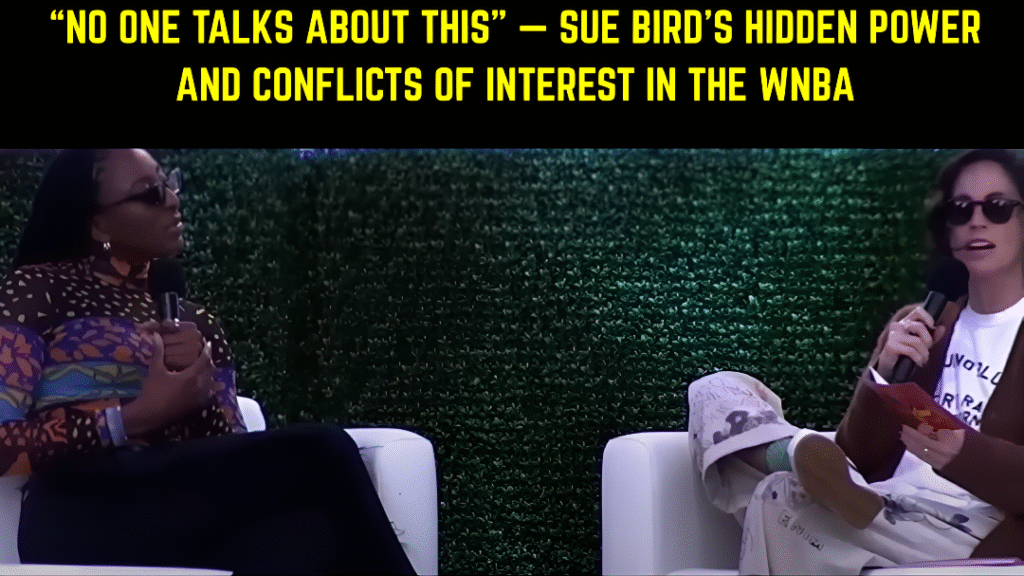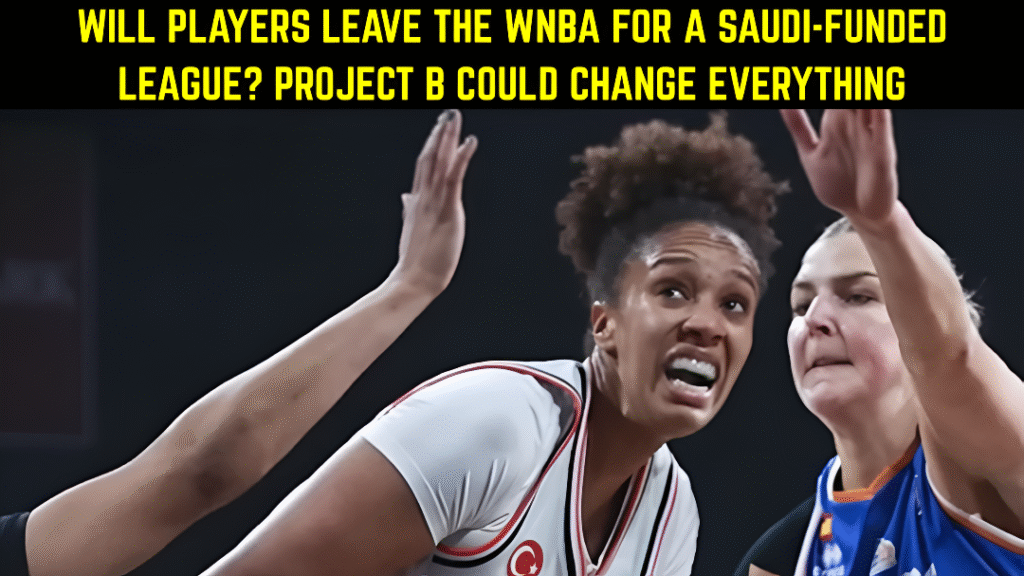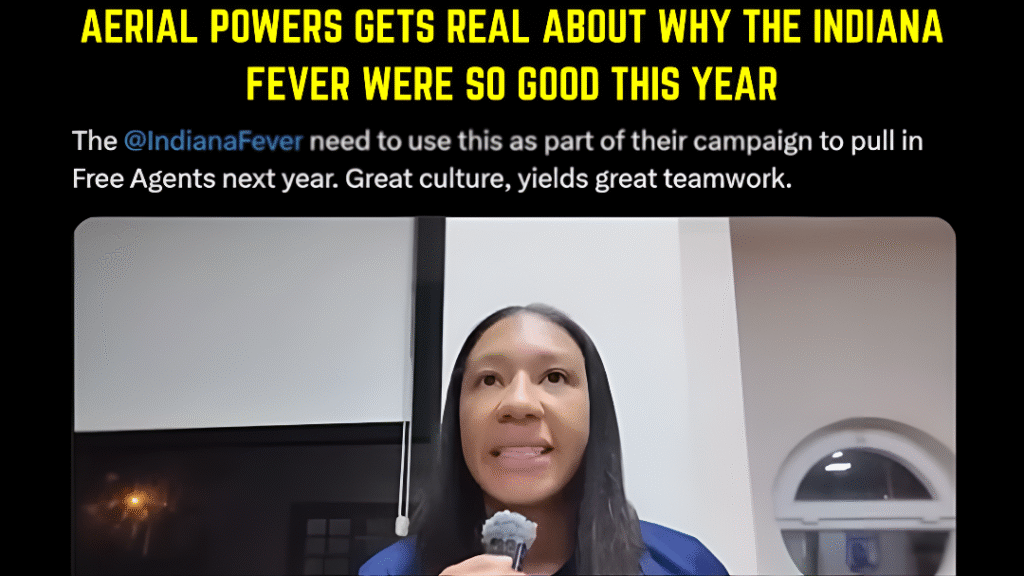Sue Bird conflict of interest — from Seattle Storm ownership to Team USA director and media mogul, Sue Bird’s growing influence raises quiet questions about power and transparency in the WNBA.
When we talk about power in women’s basketball, most people think about Cathy Engelbert, Nneka Ogwumike, or the players pushing for a better CBA. But quietly, behind the scenes, Sue Bird has positioned herself in a way that almost no one else has — she’s got her fingerprints on everything related to the WNBA.
Let’s break this down, because it’s wild once you really start connecting the dots.
Sue Bird: The Legend Turned Power Player
We all know Sue Bird, right? One of the greatest ever. Played her entire career with the Seattle Storm, won championships, led Team USA, and basically helped shape the WNBA’s identity.
But retirement didn’t slow her down — it just expanded her reach.
- She’s now part of the Seattle Storm ownership group. Not the majority owner, but still someone with real influence in that front office.
- She’s also the Managing Director of USA Basketball (women’s side) — meaning she decides who makes the national team. Yeah, the Olympic roster literally runs through her.
- And beyond that? She’s built a mini-empire in media and production.
From her podcast “Bird’s Eye View”, to “A Touch More” (her joint company with Megan Rapinoe), to her co-ownership in “TOGETHXR” — a media brand that highlights women’s sports and recently added Angel Reese as a co-owner — Sue Bird’s got her hands in almost every corner of women’s basketball.
The “Conflict of Interest” Nobody Wants to Talk About
Now, here’s where things get sticky.
When you listen to Sue Bird interview Nneka Ogwumike or other active WNBA players, you have to remember: she’s not just a retired player.
She’s:
- A team owner (Seattle Storm),
- A media company owner paying current WNBA players for appearances,
- And the Team USA selector who literally controls Olympic opportunities.
That’s three overlapping lanes of influence — money, media, and power — all flowing through one person.
So, yeah. That’s a conflict of interest.
It doesn’t mean she’s doing something shady. But it does mean we should acknowledge the obvious — she’s deeply tied to the same ecosystem she’s covering and shaping.
As one fan put it, “Women’s basketball is such a small world, you can’t find anyone influential without some crossover.”
True. But still — it’s worth noting who’s holding the cards.
“It Is What It Is” — But It’s Worth Keeping in Mind
Here’s the thing: nobody’s saying Sue Bird should stop what she’s doing. Honestly, she’s done more to elevate the women’s game post-retirement than most. She’s creating content, giving players exposure, and keeping the spotlight on women’s hoops year-round.
But when Sue’s sitting across from a current player — while being part owner, media boss, and national team selector — it’s fair to ask: what conversations can’t happen on that mic?
For example, would a player feel comfortable criticizing the league or the USA Basketball system if Sue Bird is both an interviewer and a gatekeeper?
That’s the quiet tension. Nobody’s mad about it — it’s just one of those “keep it in mind” things.
Parallels: Napheesa Collier and the Unrivaled Debate
If you’ve followed the recent talk around Napheesa Collier and Breanna Stewart launching their new league Unrivaled, you’ve probably heard people throw around the same phrase: “conflict of interest.”
Collier’s an active WNBA player, a co-founder of Unrivaled, and part of the players’ union leadership. She’s basically helping negotiate the next WNBA CBA while simultaneously launching a side league that pays WNBA players to compete off-season.
Is that a conflict? Technically, yes. But just like Sue Bird’s case — the players voted her in. If they’re fine with it, it is what it is.
That’s kind of the vibe across women’s hoops right now: everyone knows the ecosystem is small, so overlap is inevitable. Still, it’s smart to recognize where the lines blur.
Sue Bird’s Bigger Picture
What’s fascinating about Sue Bird is how she’s engineered this post-career phase. She didn’t just walk away — she built her own infrastructure.
She’s created:
- A media platform (TOGETHXR) to amplify players’ voices.
- Business pipelines that give women athletes opportunities beyond the court.
- And now, with her USA Basketball role, she’s shaping who represents the country at the highest level.
Basically, she’s gone from being the face of the WNBA to one of its most powerful architects.
And maybe that’s the point — the WNBA’s evolution is no longer just about players vs. the league. It’s about who’s building the next version of it from within.
The Next Big Test: The 2025 CBA
When the new CBA negotiations kick in, Sue Bird’s indirect influence will be felt again. Nneka Ogwumike and the players’ committee are fighting for revenue sharing, better benefits, and more transparency in the league’s finances.
They want a deal that finally ties player pay to league growth — not a fixed number.
As Sue Bird said in that interview, the last CBA was “the shirt before the shirt.” It set the stage for this moment — when real money and visibility are finally here.
Now, the players want their piece of the pie.
And the interesting part? Some of the people shaping the conversation — Sue, Nneka, Stewie — are also the ones running the systems behind it.
Final Thoughts
Sue Bird’s influence is everywhere — and honestly, it’s kind of genius. She’s part owner, media mogul, and USA Basketball director, all while remaining one of the most respected voices in the sport.
But with great influence comes those quiet gray areas that deserve to be recognized.
It’s not about canceling her — it’s about understanding how much of the WNBA’s direction runs through her orbit.
So next time you hear a Sue Bird interview or see her name attached to a new project, just keep this in mind:
She’s not just part of the conversation — she is the infrastructure.
It is what it is.
Also Read: Latest Trending News


